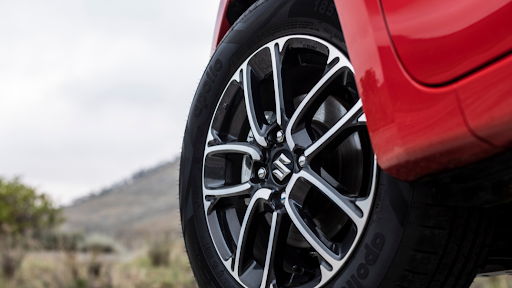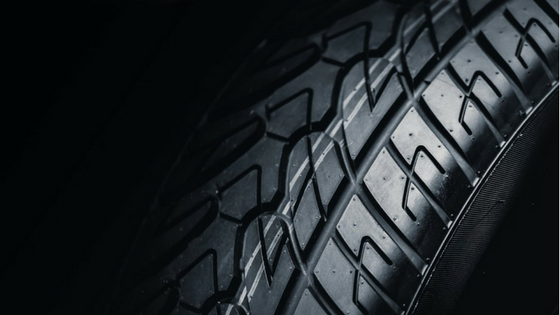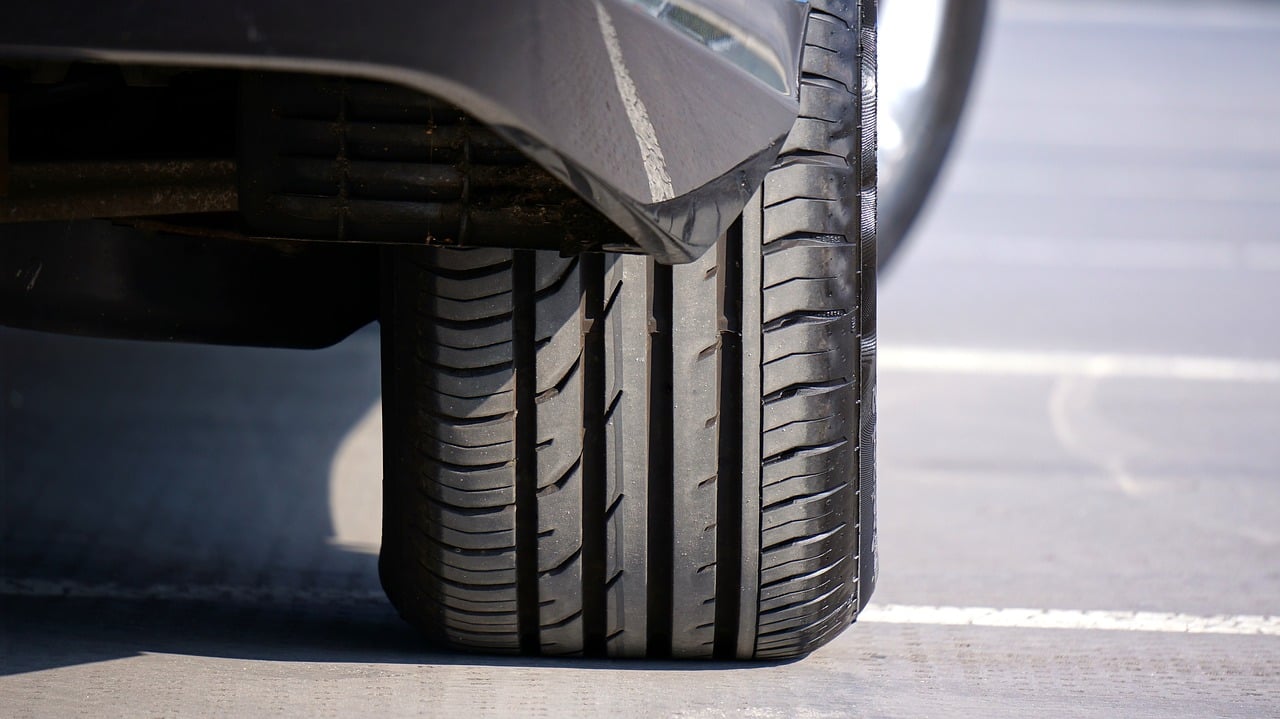 In this episode Peter gives us some insight into tyres which are a critical safety component on any vehicle. He discusses the different types of tyre, why we need them and also how to decipher the numbers that are found on each tyre. To end off he gives us a few pointers to consider when the time comes to buy new tyres.
In this episode Peter gives us some insight into tyres which are a critical safety component on any vehicle. He discusses the different types of tyre, why we need them and also how to decipher the numbers that are found on each tyre. To end off he gives us a few pointers to consider when the time comes to buy new tyres.
If you can’t watch the video, you can read the video transcription below:
Edited for clarity and readability
Welcome to this week's episode of Let's Talk Automotive and How Things Work. And in this segment, we're going to take you through some of the basics of tyres that we find typically on either our bakkies or passenger cars.
So, first things first, let's understand clearly that a tyre is a critical component for our car from a safety point of view. It is literally the only area that is in contact between the car and the road. And in fact, the contact area, the tread that's exposed to the tarmac is normally about the size of the palm of our hand. And if we take four of these, that equals to about the same size as an A4 sheet of paper, that's all that's holding you between being safe and having an accident on the road. So let's go through the different types of tyres that we typically find out there.
The first is that we get high performance tyres, and these are predominantly also summer tyres. And the characteristics of these tyres is that they have a low profile, which I'll explain a little bit later, but they also have a very square shoulder and the tread bias is towards dry weather handling characteristics.
So the shoulder being square prevents the tyre from rolling when we go around a corner aggressively, and one of the things that we do find with these types of tyres is that they track very easily in terms of the surface of the road. So if you've got a high-performance car with the high-performance tyre, you do find that the tyre tends to cause the car to wander a bit. So there's nothing wrong with the car, it's just one of the characteristics of the tyres.
The second type of tyre that we get, which is one that we find on most of our vehicles in any case, is our all weather tyre. And as the name suggests, that tyre is able to handle both wet weather conditions, as well as dry driving conditions and it has characteristics that we take from both conditions.
Then we get a pure wet weather tyre and the snow tyre. Now in some countries, by the way, where there is snow, you're actually legally required to remove your summer tyres or your all-weather tyres and put on your wet weather or snow tyres. And in fact, you can get a fine if you have the wrong set of tyres on. Now, interestingly enough, the way that a snow tyre gets its grip is the same way that we get grip, I suppose, when we’re taking Prestik off something. So if we've got a piece of Prestik on a piece of paper, we use another piece of Prestik to pull that original piece off. And it's exactly the same with snow tyres. With snow tyres, we need the tread to fill up with snow so that it's the snow on snow contact that actually creates the grip.
So quite a cool concept that.
Then we get an all-terrain tyre. So that's a tyre that's going to serve a number of purposes. And we find these typically on our bakkies and commercial vehicles that are off-road and they can handle a little bit of mud and mostly dust though.
And then of course, we get full mud tyres and the way that a mud tyre gets grip is it's more of a paddling effect on the tread that pulls that tyre through the mud. So those are some of the types of tyres we get.
Now, of course, the car manufacturers worked very, very closely with the tyre manufacturers to produce very specific characteristics out of the tyres that we want on our vehicles. And the two main characteristics that we want is first of all, noise reduction. So again, if we look at European emissions taxes, one of the emissions that you're taxed on is noise emission from your tyres.
So there's a lot of work that goes into reducing the amount of noise that your tyre produces. And in fact, on your more expensive tyres, you can actually start to see specific patterns on the tread that are actually sound baffles that assist in reducing the noise that the tyre generates when it's rolling.
The second thing that we want to reduce is the amount of static discharge that the tyre produces so that when we get in and out of the vehicle, we don't shock ourselves to death. So in the good old days, we used to see a lot of cars driving around and they had chains that hung off underneath the vehicle. And as the chain made contact with the road, it discharged all the static buildup. Now we don't see that anymore because the tyres do a great job in actually reducing the static charge.
Now, one of the things that we get asked a lot of questions about is what do the numbers on the tyres stand for? So we've got a tyre over here that we're going to use as an example. And in this case, we can see that the markings say 85 65 R 15, and then there's two more items over here. There's an 88 and an H. So let's go through these numbers independently, right? So let's start off with this 185. This tells us what the width of the tyre is in millimeters. Then we have 65. Now this is the profile of the tyre or the height of the tyre. Now it's not, as you think; it's not actually a measurement in millimeters. The 65 tells us that the height of the profile of the tyre is 65% of the width of the tyre.
Now you may wonder why we do it like that. And the simple reason is so that we can accommodate a change in the actual diameter of the rim that we have on our wheel. So if you want to go from a 16 inch to an 18 inch rim, there are tables that the tyre fitment centers have, that they can plug in your tyres details and come up with a tyre that might be able to accommodate a different diameter on the rim, but it still retains the same height of the tyre. And it's critical that our tyre height remains consistent because this determines the accuracy of our speedometer, as well as the effectiveness of sensors, such as our ABS sensor and our ESP sensor that they work correctly. Then we have this R over here, which tells us that this is a radial tyre. And what that means is that there's actually cabling, high strength cabling in the tyre itself that provides strength and rigidity for the tyre.
And then we have this 15 over here. Now this 15 is the diameter of the rim in inches. So quite interesting for me is that we have in the same line millimeters, a percentage and inches. And then of course, we've got two more ratings on the tyre. The first is this 88, for example, over here, which is our load index. Now 88, just out of interest means this tyre can handle about 560 kilograms, so one mother-in-law per tyre load that we can carry.
And the H is our speed rating. And in this case, H means that this tyre can handle around 220 kilometers an hour from a speed rating point of view. But there's a word of caution behind that because your speed rating of your tyre is what your tyre can handle for 15 minutes of continuous use before it starts to fatigue the tyre. There's a dangerous misconception that people believe that if their tyres are smooth, that then they are now suddenly going to have a slick tyre, and that's going to give them more grip. A slick tyre is made out of a completely different compound, which is actually quite sticky and that’s what causes it to grip whereas with a normal road going tyre
we need those blocks and we need that tread to create a biting edge. And that's what gives us our grip. Now I can simulate a biting edge with my fingers. If I run my fingers this way, and you can do the same, there's no grip, but if I push them this way, they suddenly grip. And it's this movement on the base of my fingers that creates that biting edge. And it's exactly the same as with your tyres.
Okay. So a couple of safety factors just to consider when purchasing a tyre. Bear in mind that this is one of your key safety elements on a vehicle. So we really shouldn't be taking chances in terms of buying unknown brands. Also make sure that when you purchase a tyre, that the tyre is still a new tyre in terms of its production, make sure that the tyre has a healthy speed rating as well as a load index, and of course, make sure that your tyres are operated at the manufacturers’ recommended
pressures.
So,
we hope that that information was useful to you. And we look forward to seeing you on future episodes of How Things Work.
To watch the full episode, visit: https://fb.watch/6WcUSOB6T8/


![How to change a tyre [infographic]](https://blog.suzukiauto.co.za/hubfs/How%20to%20change%20a%20tyre/How%20to%20change%20a%20tyre-104140-edited.jpg)